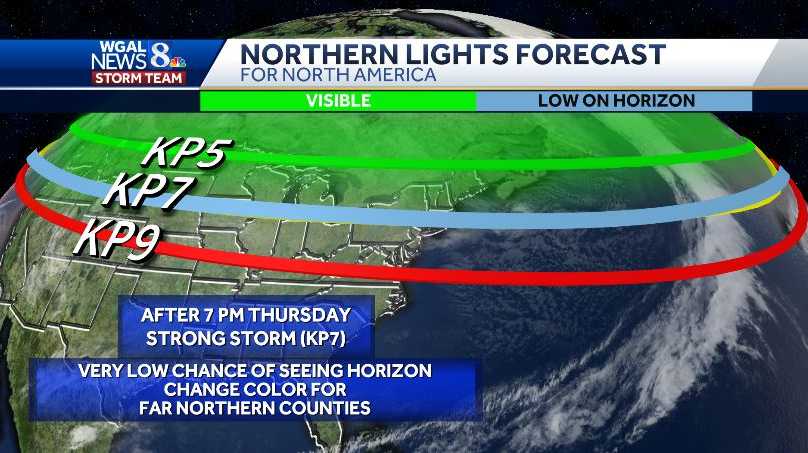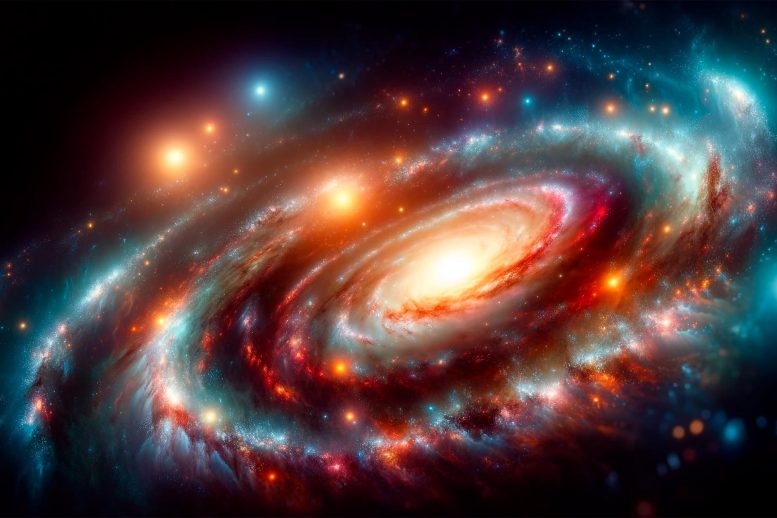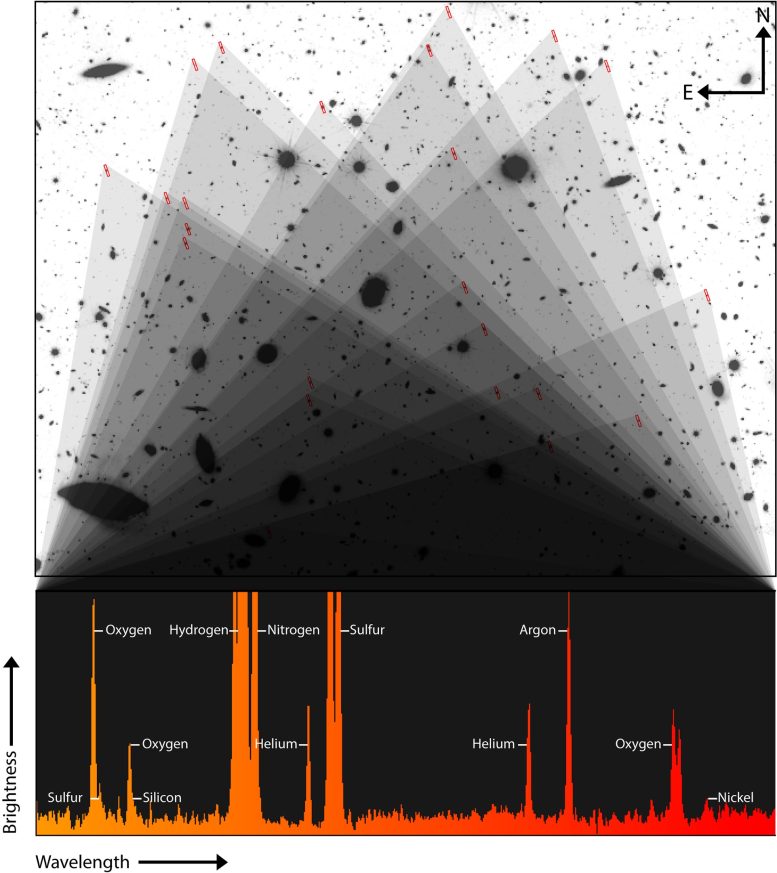
The Space Weather Prediction Center says in their Wednesday evening forecast that the Northern Lights, otherwise known as aurora borealis, may be visible across Pennsylvania because a "strong" geomagnetic storm is now likely for Earth starting Thursday evening and continuing Friday. The SWPC says the sun had several coronal mass ejections earlier in the week and they are heading toward Earth. According to the SWPC website, the ejections are large expulsions of plasma and magnetically charged particles. These particles then interact with Earth's atmosphere and Earth's magnetic field and create the aurora. The stronger the geomagnetic storm or larger the amount of material ejected by the sun, the farther south the Northern Lights can be seen during a storm. The Space Weather Prediction Center says in their forecast issued Wednesday afternoon that the anticipated storm would produce aurora as far south as Pennsylvania with a peak Kp value of 7. The Space Weather Prediction Center's website says the Planetary K-index is used to characterize the magnitude of geomagnetic storms. The Kp index goes between 0 and 9. For us to see the Northern Lights, a Kp index of at least a 7 is needed. The forecast calls for a Kp-7 late Thursday. Typically, when it's possible to see the Northern Lights in Pennsylvania, a faint colored glow low on the horizon, usually in the northern sky, is what we see. Northern areas of the Susquehanna Valley have a higher chance of seeing the lights.The best areas to try to see the aurora are in rural areas with very little to no street lights, light pollution, and with a clear view of the northern sky, like on a hill or mountaintop. Stay tuned as the Space Weather Prediction Center may update or change its forecast leading up to the possible geomagnetic storm. The WGAL News 8 Storm Team is calling for mostly clear skies Thursday evening and then high clouds begin to increase across the region closer to dawn Friday morning. Read more about the Space Weather Prediction Center here: https://ift.tt/atguRY1 your photos and videos with WGALWe have several ways you can show us the photos and videos you are capturing.DIRECT UPLOAD: There is a form here to let you upload photos or video.EMAIL: Just send to news8@wgal.com.JOIN OUR FACEBOOK GROUP: Our uLocal Facebook group is here.
The Space Weather Prediction Center says in their Wednesday evening forecast that the Northern Lights, otherwise known as aurora borealis, may be visible across Pennsylvania because a "strong" geomagnetic storm is now likely for Earth starting Thursday evening and continuing Friday.
The SWPC says the sun had several coronal mass ejections earlier in the week and they are heading toward Earth. According to the SWPC website, the ejections are large expulsions of plasma and magnetically charged particles. These particles then interact with Earth's atmosphere and Earth's magnetic field and create the aurora. The stronger the geomagnetic storm or larger the amount of material ejected by the sun, the farther south the Northern Lights can be seen during a storm.
The Space Weather Prediction Center says in their forecast issued Wednesday afternoon that the anticipated storm would produce aurora as far south as Pennsylvania with a peak Kp value of 7. The Space Weather Prediction Center's website says the Planetary K-index is used to characterize the magnitude of geomagnetic storms. The Kp index goes between 0 and 9. For us to see the Northern Lights, a Kp index of at least a 7 is needed. The forecast calls for a Kp-7 late Thursday. Typically, when it's possible to see the Northern Lights in Pennsylvania, a faint colored glow low on the horizon, usually in the northern sky, is what we see. Northern areas of the Susquehanna Valley have a higher chance of seeing the lights.
The best areas to try to see the aurora are in rural areas with very little to no street lights, light pollution, and with a clear view of the northern sky, like on a hill or mountaintop.
Stay tuned as the Space Weather Prediction Center may update or change its forecast leading up to the possible geomagnetic storm.
The WGAL News 8 Storm Team is calling for mostly clear skies Thursday evening and then high clouds begin to increase across the region closer to dawn Friday morning.
Read more about the Space Weather Prediction Center here: www.spaceweather.gov.
Share your photos and videos with WGAL
We have several ways you can show us the photos and videos you are capturing.
https://ift.tt/J6V4Xvu
Science















